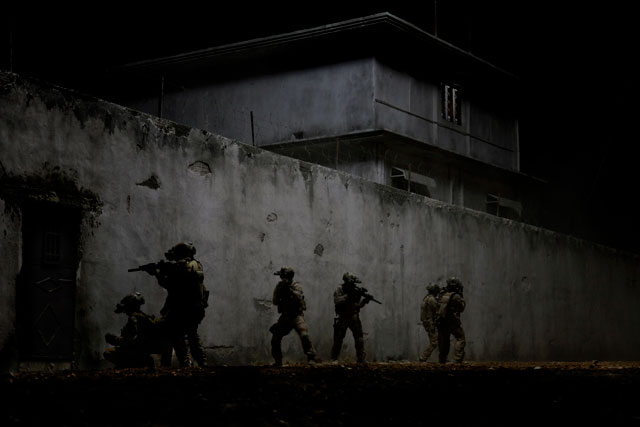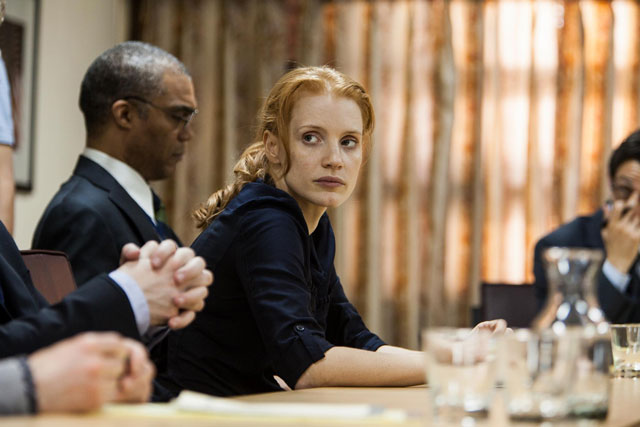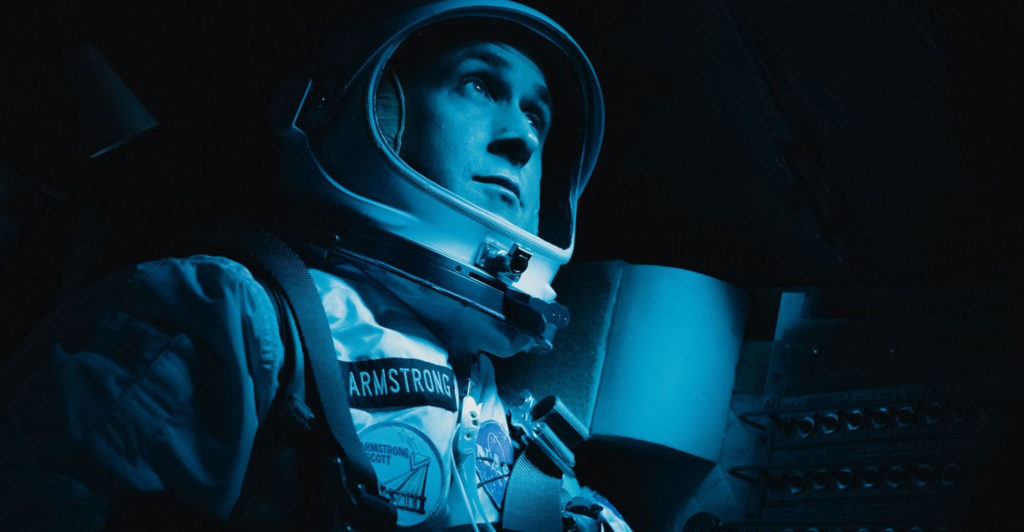
Director Kathryn Bigelow did it with The Hurt Locker and she has done it again with Zero Dark Thirty: crafted an awards season-favourite film about the war on terror that has enraged both the American right and the left almost equally. In partisan times, studied neutrality is the most revolutionary stance of all.
Zero Dark Thirty is a flawed but absorbing fictionalised look at the hunt for Bin Laden after the Twin Towers fell on 11 September 2001. The film opens on a black screen as the desperate cries of those trapped in the upper levels of the World Trade Center and the panicked chatter of emergency services personnel fill your ears.
In the scenes that follow, the film cuts to a CIA “black site” where American interrogators are questioning a prisoner with possible links to al Qaeda terrorists. It is these scenes where prisoners are humiliated, subjected to waterboarding and deprived of sleep that have caused all the fuss. Naomi Wolf in a typically emotive and simplistic polemic goes as far as to call Kathryn Bigelow a “handmaiden to torture” like the Nazi propagandist, Leni Riefenstahl.
Utter hogwash. As screenwriter Mark Boal says in defence of the film, depiction is not endorsement. Bigelow and Boal never suggest that torture was the only tool used to find Bin Laden, or even a particularly effective one. They hint that torture isn’t moral even when it works.
And the psychic scars torture leaves on the torturers are as visible as the pain of those tortured, especially in the anguish we see in the agency’s torturer, Dan (Jason Clarke in one of the film’s standout supporting performances). The film’s title refers as clearly to the moral murkiness of the war on terror as it does to the execution of Bin Laden in a covert, late-night mission.
Zero Dark Thirty centres on a lone wolf CIA operative named Maya, played with an interiorised intensity by Jessica Chastain in a Golden Globe-winning and Oscar-nominated performance. Apparently a composite of a couple of female CIA operatives who played important roles in locating Bin Laden, she’s all-business, all the time.

With her flaming hair and unflinching eyes, Maya is a beacon of unyielding intelligence, fierce intuition and obsessive dedication in an agency that seems to have lost its bearings. Recruited straight from college to be a CIA terrorist hunter, Maya is, as her bosses put it, a “killer”.
I’m not really sure that the chain of command would give a stubborn young maverick like Maya free rein, no matter how brilliant she is. But that hardly matters because of the force of the conviction that Chastain brings to the role.
It’s a story which seems personal and resonant for Bigelow, who has some experience herself in challenging a conservative hierarchy. After spending years in the wilderness after the commercial flop of K19: The Widowmaker, she returned with the low-budget The Hurt Locker and became the first woman to win a best director Oscar.
Zero Dark is as technically accomplished as The Hurt Locker, and Bigelow’s mastery over the form and structure of her content is even better. Unlike The Hurt Locker, she seldom ventures into fanciful Hollywood realism here, handling her few action sequences with restraint and elegance. The approach is admirably austere — we’re not distracted by trite backstories for each of the characters and exposition about their motives.
Zero Dark Thirty is fascinating throughout, though there is little movement in the first two acts of the film. We simply watch on as the CIA investigators use sleuthing, torture, guesswork and surveillance to find Bin Laden’s trail. All we have is Maya’s certainty that a particular al Qaeda courier will lead to Bin Laden’s doorstep, if only he can found and identified.
Zero Dark Thirty trailer (via YouTube):
As in David Fincher’s true crime drama Zodiac, Zero Dark Thirty is as much about the procedure as the goal. And, like that film, the driving force for every action in Zero Dark Thirty is a man who is barely seen on screen, but whose presence is felt in in every scene. We know how and where it will end, but it is the means for getting there that matters.
The key set piece — if you can call it that — is a taut re-enactment of the night raid on Bin Laden’s compound in Pakistan, where both Bigelow and photography director Greig Fraser show off their flair for action. Viewed partially with an outsider’s view on the action and partially through the night vision goggles of the Navy Seals who carried out the operation, it is a sequence of dazzling virtuosity.
When Bin Laden is dead, what we’re left with is a story about a woman with an obsession and the toll that a decade-long hunt for the world’s most dangerous man has taken on her and her country. Was the dirty work it took to get the target necessary and worthwhile in the end? Zero Dark Thirty lets you make up your own mind. — (c) 2013 NewsCentral Media
Read more:




